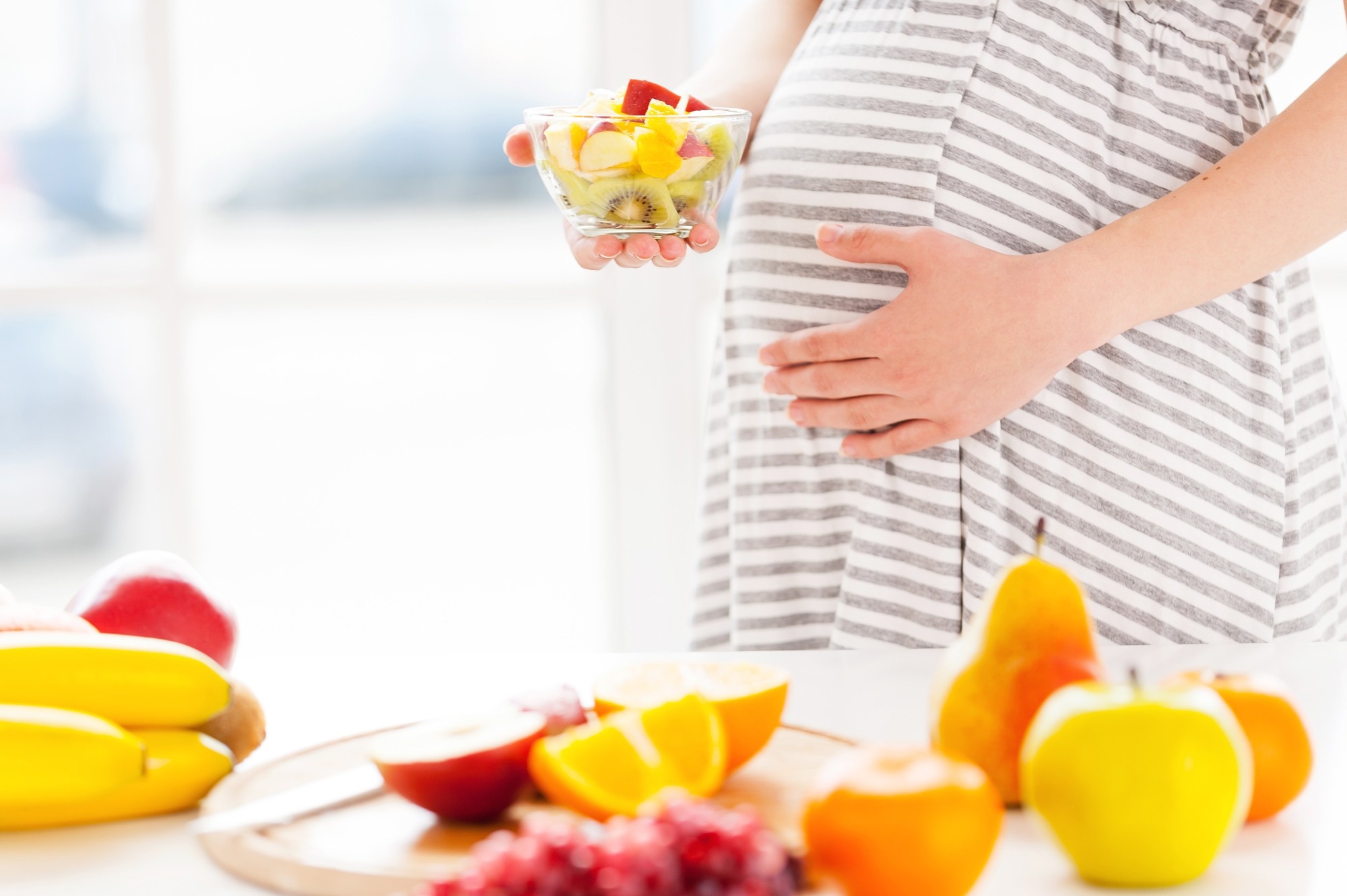The study used the principal component (PC) clustering approach to determine the association between maternal diet and infant weight at gestational age.
 Study: The Effect of Maternal Dietary Patterns on Birth Weight for Gestational Age: Findings from the MAMI-MED Cohort. Image Credit: G-StockStudio/Shutterstock.com
Study: The Effect of Maternal Dietary Patterns on Birth Weight for Gestational Age: Findings from the MAMI-MED Cohort. Image Credit: G-StockStudio/Shutterstock.com
Background
Gestational diabetes mellitus and inadequate gestational weight gain (GWG) are prime threats to maternal-neonatal well-being.
Adverse outcomes for the child include low birth weight (LBW), births that are too large or too small for gestational age (LGA and SGA) births, macrosomia, intrauterine growth restriction (IUGR), and preterm births (PTB).
Maternal nutrition is one of the most important determinants of neonatal outcomes and can be modified for better neonatal growth and development.
However, data on the impact of maternal dietary patterns on birth weight are limited, and most previous studies examining the relationship did not consider the gestational sex and age of the infant.
About the study
In the present study, researchers evaluated maternal diet's effects on infant birth outcomes.
The study included maternal-neonatal dyads from the MAMI-MED study, who had complete dietary, sociodemographic, and birth outcome data obtained using questionnaires, including maternal educational attainment, employment status, smoking habits, and anthropometric data. Pre-pregnancy body mass index (BMI) was calculated using World Health Organization (WHO) criteria.
GWG was calculated by subtracting the self-documented pre-pregnancy body weight from the weight at infant birth, and its adequacy was derived based on the Institute of Medicine (IOM) guidelines. At delivery, data were collected on the gestation length, birth length, and weight.
Study outcomes included preterm birth (PTB, spontaneous delivery before 37.0 weeks) and weight relative to the gestational age [LGA, SGA, or appropriate gestational age (AGA)] using sex-based reference tables.
Dietary habits in the previous 30.0 days were assessed using food frequency questionnaires (FFQs). Daily consumption was calculated based on portion size and intake frequency. In addition, the total caloric consumption was predicted utilizing the United States (US) Agriculture Department food intake database, accessed on January 1, 2014, and suited to Italian food items.
The data were analyzed by combining principal component analysis (PCA) and clustering (mainly K-means and hierarchical clustering). Multivariate logistic regression modeling was performed, and the odds ratios (OR) were calculated.
Results
Among the study participants, a median age of 31.0 years was observed; 51.0% were primiparous, 25.0% were highly educated, and 51.0% were employed. Among the participants, 91.0% did not smoke during pregnancy, and their median total calorie intake was 1,703.0 kcal. Pre-pregnancy BMI (median) was 23.0 kg/m2, and 60.0% of the mothers had normal body weight.
Based on the median GWG of 12.0 kg, 39.0% of the mothers documented a lowered weight gain, whereas 29.0% documented an excessive weight gain. The median value for the gestational week during infant birth was 39.0, and most (94.0%) infant births were normal-term.
Concerning birth size, median values of 50.0 cm and 3.30 kg were obtained for birth length and weight, respectively, and 82%, 7.0%, and 11.0% of neonates were AGA, SGA, and LGA, respectively.
Two clusters denoting different diets were identified. The first cluster (158 women) consisted mainly of plant-based foods (including raw and cooked vegetables, potatoes, soup, legumes, nuts, fruits, wholemeal bread, and rice), white meat, fish, eggs, margarine, butter, tea, and coffee.
The second cluster (509 women) was characterized by Western dietary patterns and junk food (high-salt snacks, dips, fries, and sweets), milk, white bread, and olive and vegetable oils.
Concerning nutrients, women from the first cluster consumed more magnesium, folate, vitamin A, vitamin B6, and vitamin C, whereas women from the second cluster consumed more unsaturated and saturated-type fatty acids, vitamin B1, and calcium. Younger and less educated women adhered more to the Western diet (second cluster).
The prime estimators of small gestational age births were primiparity and employment status but not dietary compliance. Newborns of employed mothers had lower odds of SGA than those of unemployed mothers (OR 0.4).
On the contrary, primiparous females had greater odds of SGA than those with ≥1.0 prior pregnancies (OR 2.7). Women in the second cluster showed greater odds of large gestational age (LGA) births than women in the first cluster (OR 2.2).
In addition, the odds of LGA rose by 11.0% per unit elevation in pre-gestational BMI (OR 1.1). Younger Italian women had poorer diet quality, indicating that health consciousness improves with age.
Highly educated individuals tend to possess greater knowledge of the risk-benefit ratios of their diets, and therefore, education is the most critical sociodemographic factor that influences diet-associated decision-making.
Conclusion
Overall, the study findings highlighted the association between abiding by Western diets and the probability of having LGA newborns.
The likelihood of LGA was 2.20-fold greater among women adhering to Western diets than those abiding by healthier plant-based diets after adjusting for covariates such as GWG and total caloric intake.
Additionally, the odds of LGA increased with an increase in BMI values. Further research must investigate probable confounding and mediation by employment type, work hours, household income, and regular activities to contribute to the scientific literature and guide nutritional policy-making for pregnant women.